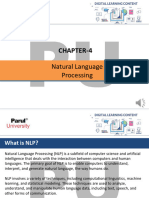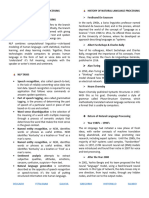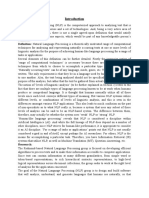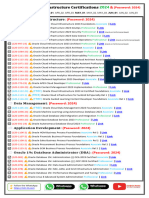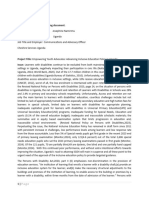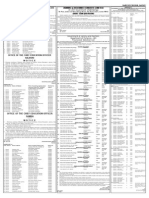0% found this document useful (0 votes)
95 views5 pagesWhat Is NLP?
NLP stands for Natural Language Processing and uses computational linguistics and statistical, machine learning, and deep learning models to help machines understand, analyze, and interpret human language. NLP drives applications like translation, voice assistants, chatbots, and text summarization. There are two main components of NLP: Natural Language Understanding which analyzes language, and Natural Language Generation which produces language.
Uploaded by
Harshit GoyalCopyright
© © All Rights Reserved
We take content rights seriously. If you suspect this is your content, claim it here.
Available Formats
Download as DOCX, PDF, TXT or read online on Scribd
0% found this document useful (0 votes)
95 views5 pagesWhat Is NLP?
NLP stands for Natural Language Processing and uses computational linguistics and statistical, machine learning, and deep learning models to help machines understand, analyze, and interpret human language. NLP drives applications like translation, voice assistants, chatbots, and text summarization. There are two main components of NLP: Natural Language Understanding which analyzes language, and Natural Language Generation which produces language.
Uploaded by
Harshit GoyalCopyright
© © All Rights Reserved
We take content rights seriously. If you suspect this is your content, claim it here.
Available Formats
Download as DOCX, PDF, TXT or read online on Scribd
/ 5





































